Introduction
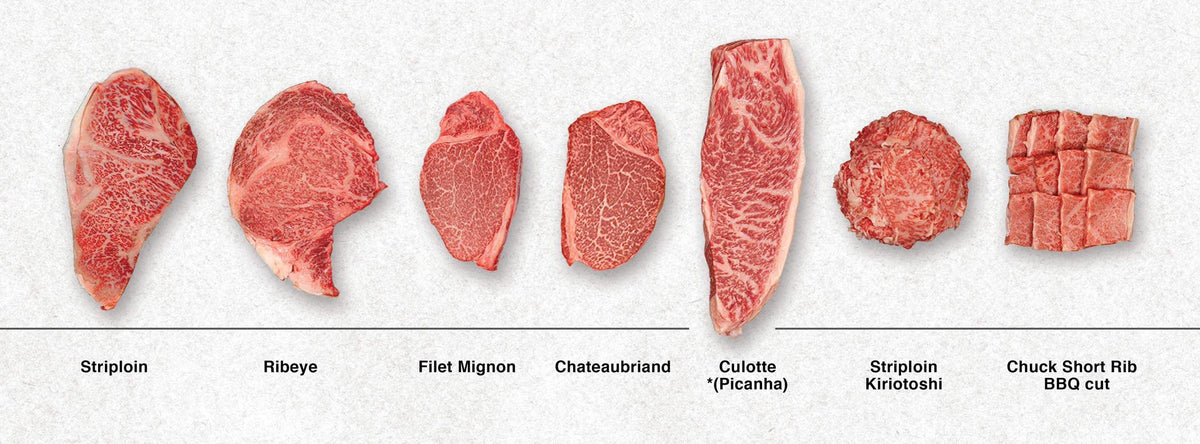
Steak lovers around the world often find themselves engaged in the age-old debate of Beef Tenderloin vs Ribeye. These two cuts of steak have long been regarded as titans in the world of meat, each with its own unique characteristics and flavors. From their fat content and tenderness to their cooking methods and nutritional value, there are several factors to consider when deciding between these two delicious options. In this article, we will explore the key differences between Beef Tenderloin and Ribeye, helping you make an informed choice next time you’re at the butcher or the steakhouse.
Overview Of Beef Tenderloin And Ribeye Steaks
Beef Tenderloin and Ribeye steaks are two highly esteemed cuts of beef that boast their own unique qualities. The Beef Tenderloin, also known as Filet Mignon, comes from the psoas major muscle, which is located in the loin area of the cow. It is known for its tender and lean texture, making it a popular choice among those who prefer a leaner cut of meat.
On the other hand, the Ribeye steak is cut from the rib section of the cow and is well-known for its rich marbling and juicy flavor. The marbling of fat throughout the meat gives the Ribeye its characteristic tenderness and adds a depth of flavor when cooked.
Both steaks have their loyal fans, each with their own preferences when it comes to taste and texture. Now let’s take a closer look at the characteristics, cooking methods, nutritional value, and taste of Beef Tenderloin and Ribeye steaks to help you make an informed decision.
Beef Tenderloin Steak
Beef Tenderloin Steak, also known as Filet Mignon, is a highly sought-after cut of beef known for its tenderness and lean texture. It comes from the psoas major muscle, located in the loin area of the cow. The absence of excessive fat marbling makes it a popular choice among those who prefer a leaner cut of meat. Beef Tenderloin Steaks are commonly cooked through methods such as grilling or pan-searing to enhance their delicate flavor. Whether prepared with a simple seasoning or accompanied by a rich sauce, Beef Tenderloin Steaks are sure to delight steak enthusiasts seeking a tender and succulent eating experience.
Beef Tenderloin Steak Characteristics And Flavor Profile
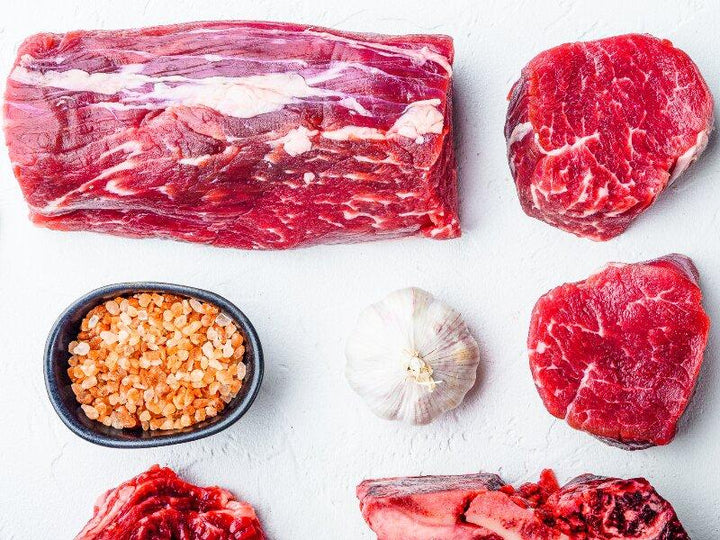
Beef Tenderloin Steak, also known as Filet Mignon, is renowned for its exceptional tenderness and melt-in-your-mouth texture. It is derived from the psoas major muscle, located in the loin area of the cow. What sets the Beef Tenderloin Steak apart is its lean and succulent nature, with minimal fat marbling. This lean meat contributes to a delicate and mild flavor profile, allowing the natural beefy essence to shine through. Its velvety texture and subtle taste make it a preferred choice for individuals who appreciate a leaner cut of steak.
Beef Tenderloin Steak Cooking Methods
Beef Tenderloin Steak, with its exceptional tenderness, can be prepared using various cooking methods to further enhance its delicious flavor. One popular method is grilling, which imparts a smoky flavor and creates a nice crust on the outside while preserving the steak’s tenderness. Pan-searing is another option, which involves searing the steak in a hot skillet to develop a caramelized crust. For those who prefer a more hands-off approach, roasting in the oven is a great choice. This method ensures even cooking and allows you to control the steak’s doneness. Whichever method you choose, ensure that the internal temperature reaches your desired level of doneness for a perfect Beef Tenderloin Steak.
Ribeye Steak
Ribeye steak, also known as Delmonico steak, is a popular cut loved by steak enthusiasts for its rich flavor and marbling. This cut comes from the rib section of the cow, specifically from the rib primal cut, which is located closer to the front of the animal. The marbling of fat throughout the meat gives ribeye steak its tender and juicy texture, making it a favorite among steak connoisseurs. Ribeye steak can be prepared using various cooking methods, including grilling and pan-searing, to further enhance its natural flavors and create a delicious crust on the outside.
Ribeye Steak Marbling And Tenderness
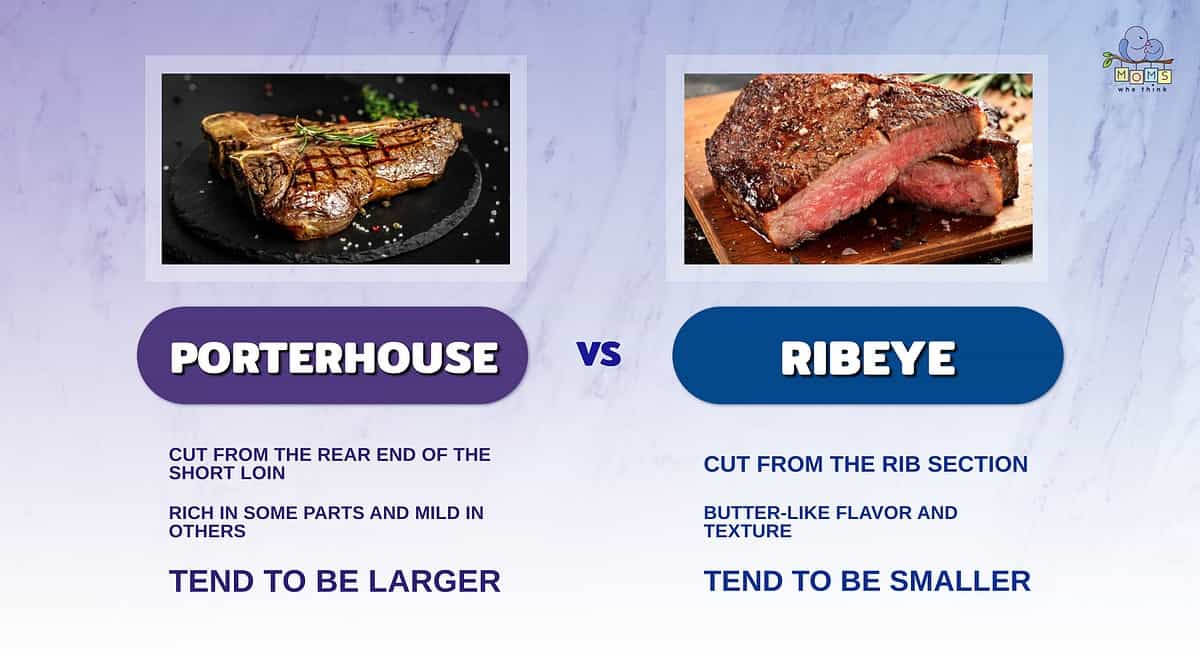
Ribeye steak is highly regarded for its marbling and tenderness. The marbling refers to the fat streaks running through the meat, which enhances both flavor and texture. This intramuscular fat melts during cooking, resulting in a tender and juicy steak. The higher fat content of the ribeye compared to other cuts contributes to its rich and buttery flavor. The marbling also helps to keep the meat moist during cooking, preventing it from drying out. As a result, ribeye steaks are known for their exceptional tenderness and succulence, making them a favorite choice among steak enthusiasts.
Ribeye Steak Grilling Vs. Pan-searing
Grilling and pan-searing are two popular cooking methods for preparing ribeye steak, each offering its own unique benefits.
Grilling a ribeye steak allows for direct exposure to high heat, resulting in a delicious charred exterior and a juicy, flavorful interior. The flames and intense heat of the grill quickly sear the steak, creating those coveted grill marks and a smoky flavor. Grilling also allows for even cooking, as the heat is distributed evenly across the surface of the steak.
On the other hand, pan-searing a ribeye steak provides a different set of advantages. Searing the steak in a hot skillet with some oil or butter allows for a crispy crust to form on the outside while locking in the juices and maintaining the tenderness of the meat. Pan-searing also gives you more control over the cooking process, allowing you to adjust the heat and monitor the steak’s doneness more closely.
Ultimately, the choice between grilling and pan-searing a ribeye steak comes down to personal preference and availability of cooking equipment. Both methods can result in a delicious and satisfying steak, so feel free to experiment and try out different techniques to find your perfect ribeye cooking method.
Nutritional Value
Both beef tenderloin and ribeye steaks are excellent sources of protein and contain essential nutrients such as vitamin D, zinc, and iron. While the nutritional value may vary slightly between the two cuts, both provide similar benefits. The New York strip steak tends to have a higher nutritional value, with lower fat and higher protein content compared to the ribeye. However, it’s important to note that the overall nutritional difference between the two cuts is minimal. Ultimately, when it comes to choosing between beef tenderloin and ribeye, the decision should be based on flavor, tenderness, and personal preferences.
Comparison Of Beef Tenderloin And Ribeye In Terms Of Nutrition
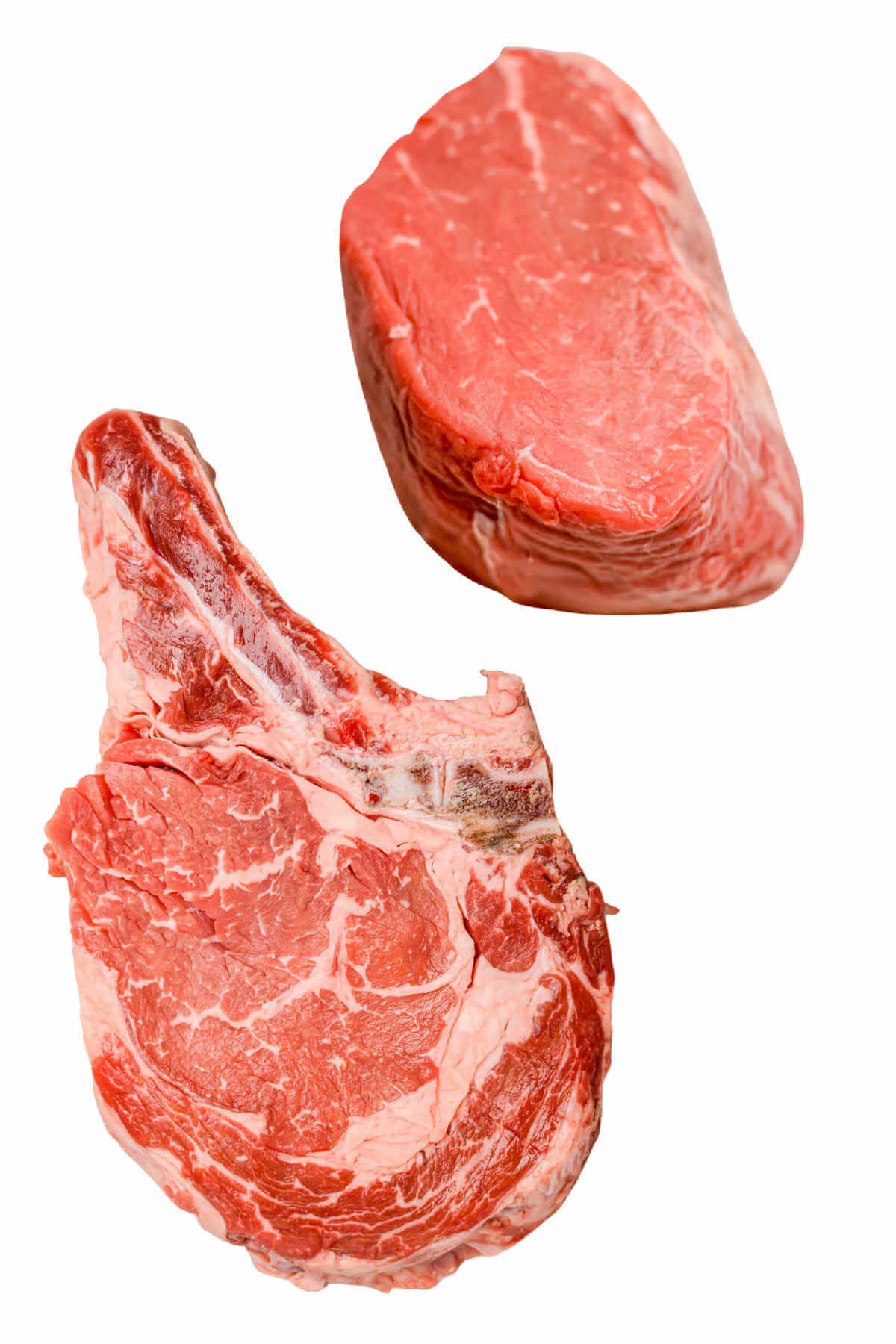
When comparing the nutritional value of beef tenderloin and ribeye steaks, there are slight differences to consider. Beef tenderloin tends to be a leaner cut with less overall fat content. It is also typically lower in calories and cholesterol. On the other hand, ribeye steak has slightly higher fat content and greater marbling, which contributes to its rich flavor and tenderness. However, both steaks are excellent sources of protein, as well as important vitamins and minerals like vitamin B12, zinc, and iron. Ultimately, the choice between beef tenderloin and ribeye should be based on personal preferences and dietary needs.
Health Benefits And Considerations
Beef tenderloin and ribeye steaks offer health benefits as part of a balanced diet. Both cuts are excellent sources of high-quality protein, essential for muscle repair and growth. They also provide important vitamins and minerals, including B vitamins, zinc, and iron. It’s worth considering that beef tenderloin is a leaner option, lower in calories and cholesterol compared to ribeye. However, ribeye steak offers more marbling, which contributes to its rich flavor. When enjoying either cut, it’s important to consider portion sizes and opt for lean cooking methods, such as grilling or broiling, to minimize added fats or oils.
Taste Test
In the ultimate battle of taste, the showdown between Beef Tenderloin and Ribeye is sure to excite your taste buds. When it comes to flavor, Ribeye takes the crown with its rich, juicy, and well-marbled meat. The marbling of fat in the Ribeye creates delicious and savory flavors that melt in your mouth. On the other hand, Beef Tenderloin offers a more delicate and lean taste, with a subtle and buttery texture. Depending on your preference for bold and robust flavors or a milder, tender taste, the choice between Beef Tenderloin and Ribeye ultimately comes down to personal preference and individual palate. Whichever cut you choose, be prepared for a mouthwatering culinary experience.
Taste Comparison Between Beef Tenderloin And Ribeye
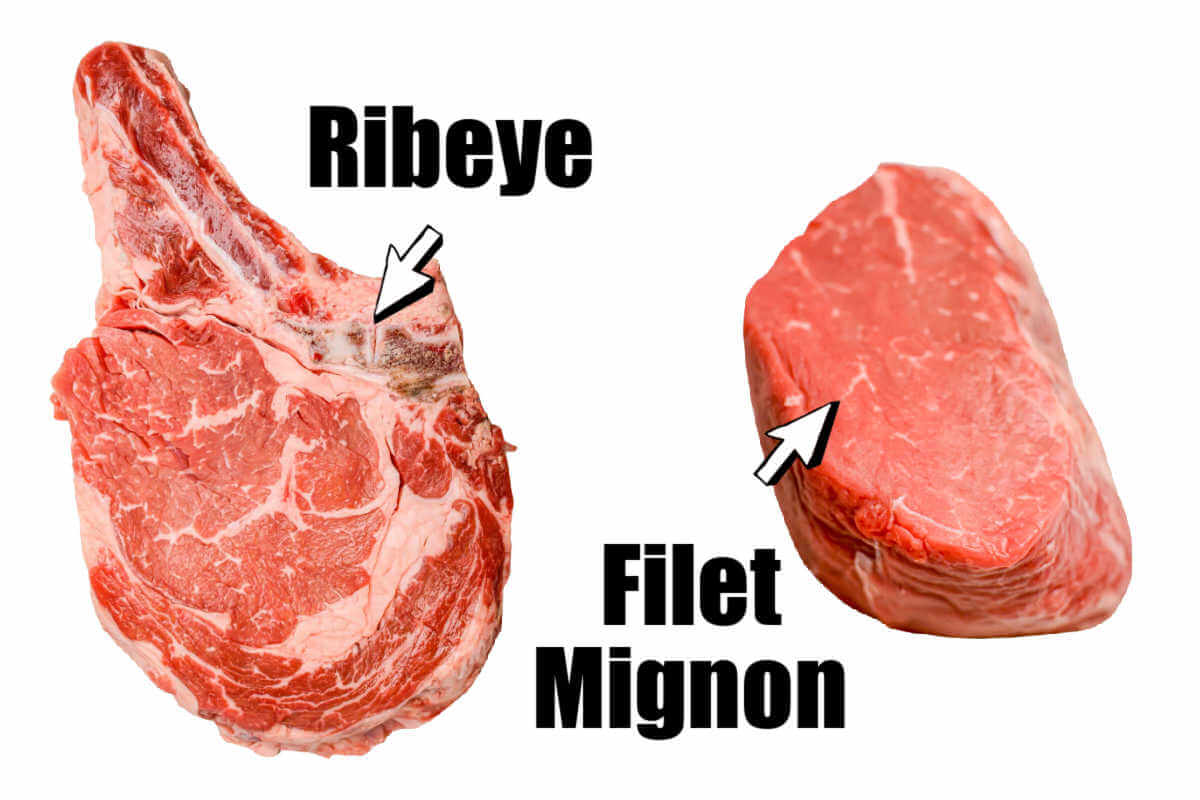
When it comes to taste, Beef Tenderloin and Ribeye offer distinct flavors that cater to different palates. Beef Tenderloin is known for its mild and delicate taste, with a subtle buttery texture. It is favored by those who prefer a more subtle and tender eating experience. On the other hand, Ribeye steals the show with its rich, juicy, and well-marbled meat. The marbling of fat in Ribeye creates delightful and savory flavors that melt in your mouth. Ultimately, the choice between Beef Tenderloin and Ribeye boils down to personal preference for either a milder, tender taste or bold, robust flavors.
Popular Accompaniments And Seasoning Choices
Popular accompaniments and seasoning choices can enhance the flavor and overall experience of both Beef Tenderloin and Ribeye steaks. When it comes to accompanying sides, classic options like roasted potatoes, grilled asparagus, or a fresh salad can complement the rich flavors of the steaks. For seasoning, a simple combination of salt, pepper, and garlic powder can help bring out the natural taste of the beef. However, for those who prefer bold flavors, options like herb-infused butter, steak sauces, or a sprinkle of Montreal steak seasoning can add an extra layer of complexity to the dish. Ultimately, the choice of accompaniments and seasonings depends on personal preference and the desired flavor profile.
Conclusion
In conclusion, the battle between Beef Tenderloin and Ribeye steaks ultimately comes down to personal preference. Both cuts offer distinct characteristics and flavor profiles that cater to different tastes. The Beef Tenderloin excels in tenderness and a buttery texture, while the Ribeye boasts rich marbling and a robust flavor. The choice between the two also depends on cooking methods and accompaniments, as well as health considerations. Regardless of which steak you choose, both Beef Tenderloin and Ribeye offer a satisfying and delicious dining experience that showcases the quality and versatility of beef.
Key Differences Between Beef Tenderloin And Ribeye

Beef Tenderloin and Ribeye steaks have distinct differences that cater to different preferences. The key differences lie in their characteristics, flavor profiles, and cooking methods.
Beef Tenderloin is known for its tenderness and buttery texture, making it a popular choice for those who prefer a lean and melt-in-your-mouth experience. On the other hand, Ribeye steak boasts rich marbling and a robust flavor, ideal for those who enjoy a juicy and flavorful steak.
Another difference is the cooking method. Beef Tenderloin is often cooked using dry-heat methods like grilling or roasting, while Ribeye can be cooked using both dry-heat methods and moist methods like pan-searing.
The table below summarizes the key differences between Beef Tenderloin and Ribeye:
| Aspect | Beef Tenderloin | Ribeye |
|---|---|---|
| Tenderness | Very tender | Tender |
| Flavor | Mild, buttery | Rich, robust |
| Cooking Method | Grilling, roasting | Grilling, roasting, pan-searing |
Personal Preferences And Final Thoughts
When it comes to choosing between Beef Tenderloin and Ribeye steaks, personal preferences play a significant role. Some individuals may prefer the tender and buttery texture of the Beef Tenderloin, while others may gravitate towards the rich marbling and robust flavor of the Ribeye. The final decision ultimately boils down to individual taste preferences and desired eating experience. Whether you prioritize tenderness or flavor, both cuts offer their unique characteristics that can satisfy steak lovers. Whichever option you choose, be sure to prepare it with the appropriate cooking method to maximize its flavor and tenderness. So go ahead, indulge in your preferred steak and enjoy the deliciousness of your choice.
FAQ About Steak Battle: Beef Tenderloin Vs Ribeye
Q: What is the main difference between Beef Tenderloin and Ribeye?
A: The main difference lies in the texture and flavor profile. Beef Tenderloin is leaner and buttery soft, while Ribeye has more marbling, making it juicier and richer in flavor.
Q: Which cut is more tender, Beef Tenderloin or Ribeye?
A: Beef Tenderloin is known for its exceptional tenderness due to the low level of connective tissue, making it melt in your mouth. Ribeye is also tender but has more fat content which adds to its tenderness.
Q: Which cut is more flavorful, Beef Tenderloin or Ribeye?
A: Flavor preference is subjective, but Ribeye is often favored for its intense beefy flavor and juicy fat content. Beef Tenderloin has a milder flavor profile but offers a more delicate taste.
Q: How do you best cook Beef Tenderloin and Ribeye?
A: Beef Tenderloin is best cooked quickly at high heat to keep it tender and juicy. Ribeye benefits from a high-heat sear followed by low-temperature cooking to render the fat and enhance the flavor.
Q: Which cut is better for grilling, Beef Tenderloin or Ribeye?
A: Both cuts are suitable for grilling, but Ribeye is often preferred for its fat content that helps keep it moist during grilling. Beef Tenderloin can also be grilled but requires careful attention to prevent overcooking due to its lean nature.
Q: Can a person who prefers lean cuts enjoy Ribeye?
A: Absolutely! While Ribeye has more marbling and fat, it offers a rich and flavorful experience that can be enjoyed by those who typically prefer leaner cuts. The fat in Ribeye adds to the overall taste and juiciness of the steak.

The Finer Diner has a rich history deeply rooted in the Mt. Oliver and Hilltop community. Our journey began with a simple yet ambitious vision – to create a welcoming space where friends and families could come together to enjoy delicious, comforting meals in a classic diner-style setting. Since our establishment, we have been dedicated to serving food, creating lasting memories, and fostering a sense of belonging within our community. Our commitment to quality, authenticity, and exceptional service has been the cornerstone of our success.